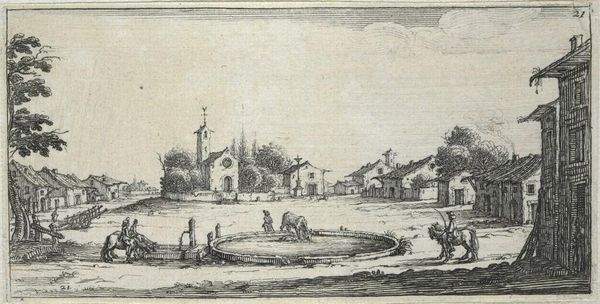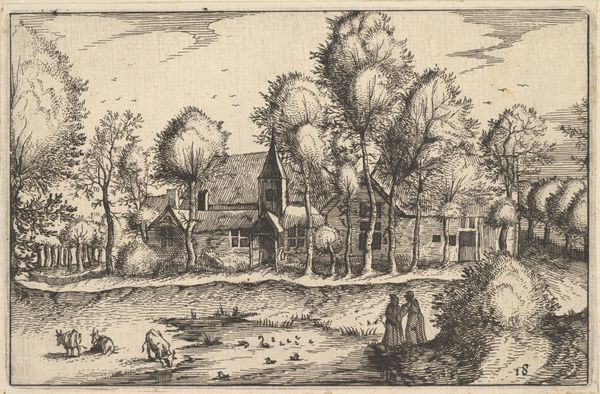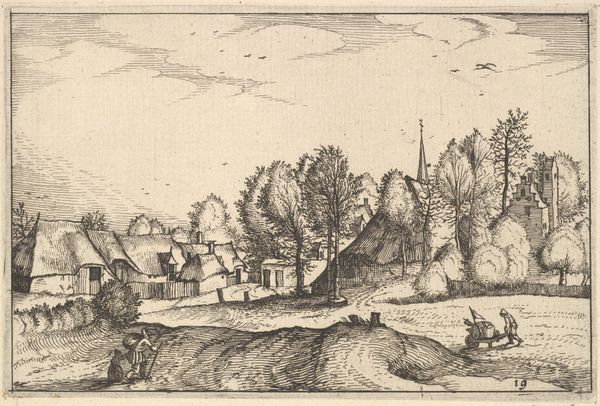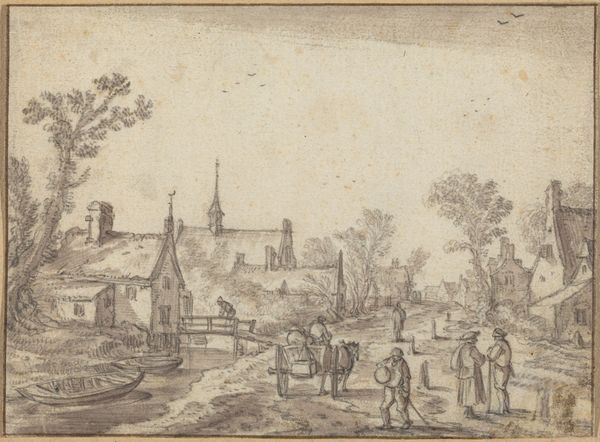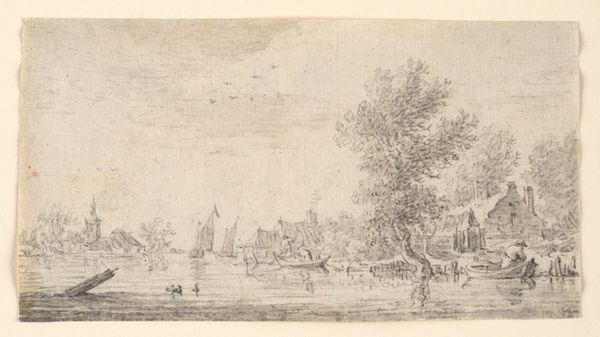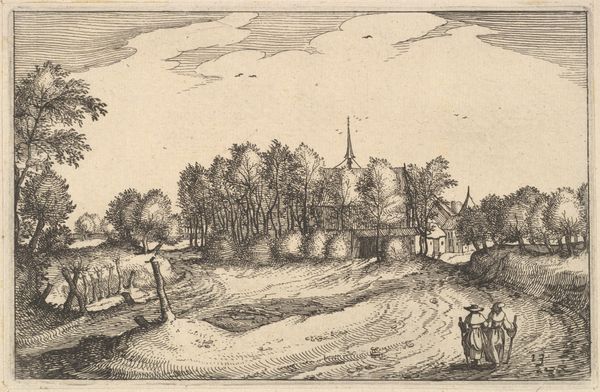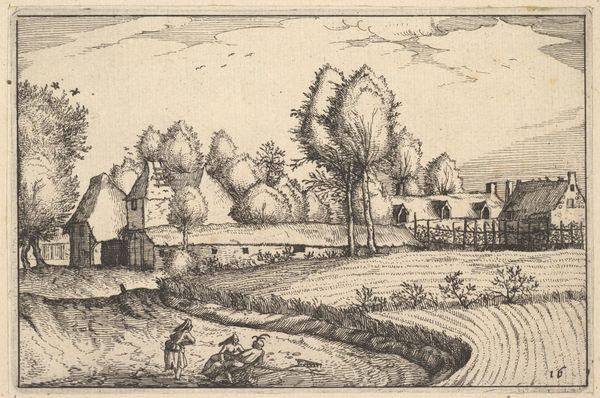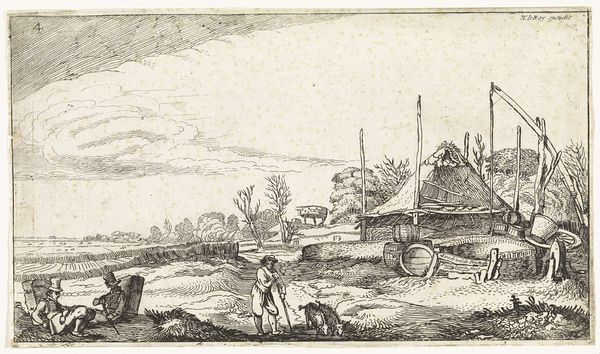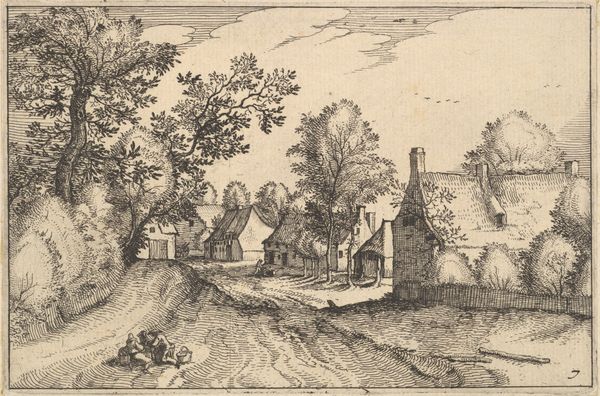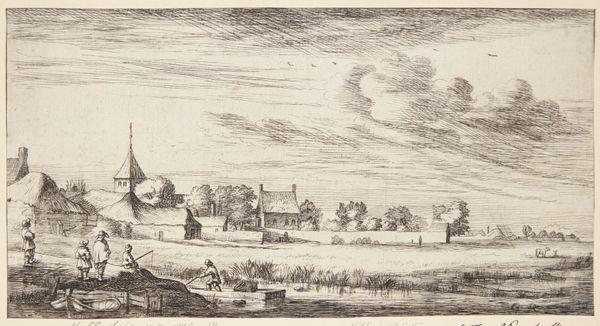
Plate 6: view of a village with a horse trough in center, horses and houses to either side, a church in center background 1636 - 1661
0:00
0:00
drawing, print
#
drawing
#
baroque
# print
#
landscape
#
house
#
horse
Dimensions: Sheet (Trimmed): 3 1/16 in. × 6 in. (7.7 × 15.3 cm)
Copyright: Public Domain
Editor: So, this is "Plate 6: view of a village with a horse trough in center..." It's by François Collignon, and it's a print or drawing made sometime between 1636 and 1661. It feels so spacious and open, and almost symmetrical with the trough in the middle. What do you see in this piece, especially looking at its composition? Curator: Indeed. The layout presents a structured organization. Observe how Collignon employs line and form to generate spatial relationships. The circular trough acts as a pivotal point, effectively splitting the scene into balanced segments. It introduces a horizontal plane while simultaneously enhancing the linear viewpoint into the distance. Do you observe any comparable features within the background elements? Editor: Well, the church in the center mirrors the circular shape in a way and then the houses are almost equally distributed on both sides. It is interesting how you can divide it into segments and not just halves. It also is interesting that the artist made a focal point the actual horse trough. How common was it for Baroque artists to organize space this way? Curator: It’s the careful crafting of these components that offers visual equilibrium. During the Baroque period, artists frequently experimented with spatial arrangements to evoke particular reactions. Consider the use of contrast. Are you perceiving light interacting with shade in such a manner as to provide volume and dimensionality? Editor: I do! Now that you point it out, there is something dramatic about the depth achieved through shading in an otherwise simple scene. I guess, without a careful approach, a landscape image could get flat really quickly! Curator: Exactly. By attending to these subtleties and their intricate interplay, we reveal the profound intellectual underpinnings driving Collignon's artistic vision. Editor: I never thought of landscapes as having that kind of... almost intellectual rigor. That's something new to consider when looking at these kinds of pieces. Thanks!
Comments
No comments
Be the first to comment and join the conversation on the ultimate creative platform.
